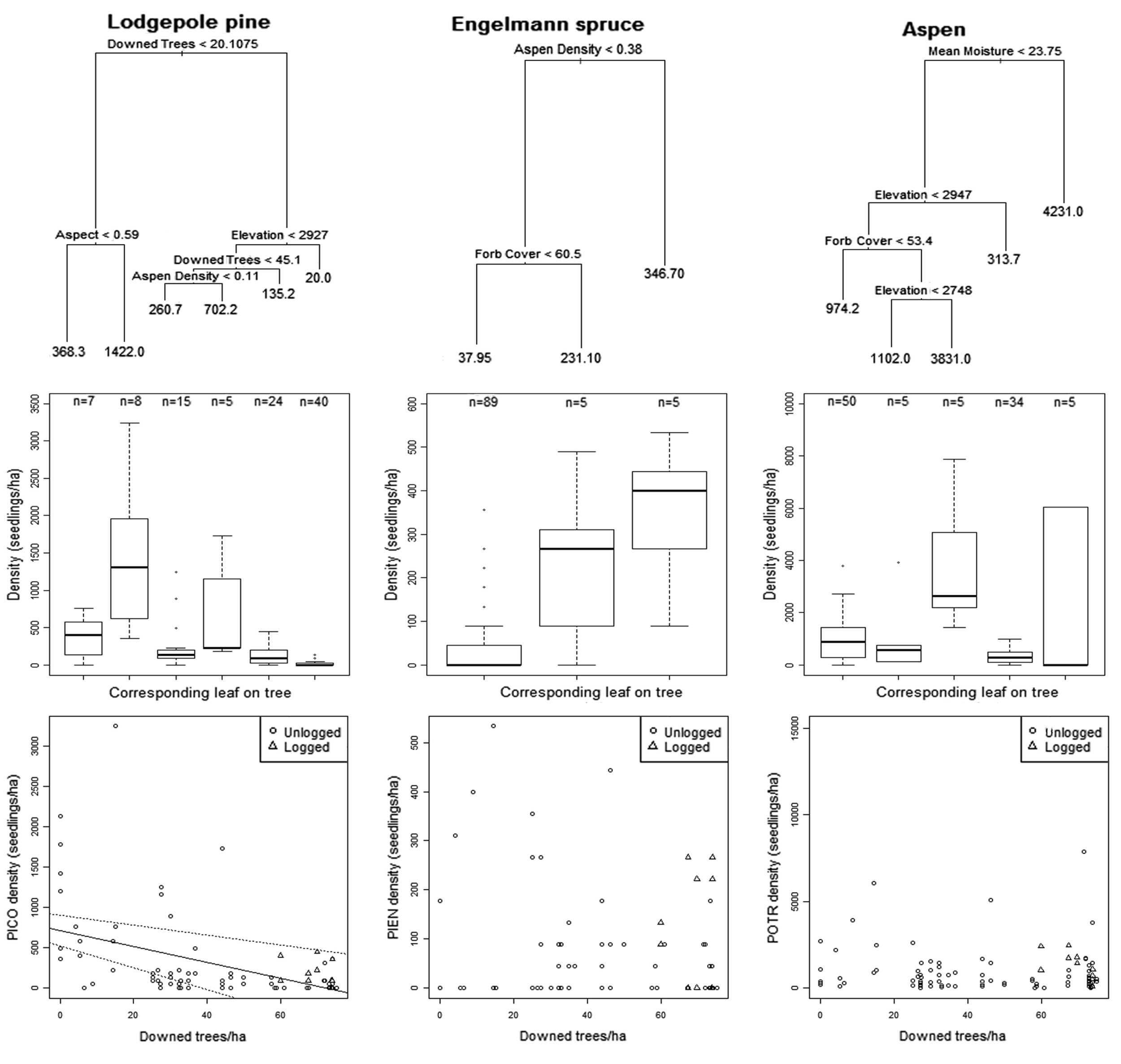Multiple disturbances and resilience
Distribution of serotinous species in North America (top) and expected increases in fire frequency (bottom). Full figure from Buma et al. 2013; bottom projections from Mortiz et al. 2012. KMZ file for Google Earth.
Serotiny
Many species have seeds or cones which only respond to heat - they need fire to reproduce. While fire is expected to increase in many areas, that doesn't necessarily mean that those species will do well. Spatial context and other disturbances can greatly alter the effective resilience of serotinous species to fire.
Burned area with regenerating lodgepole pine in the front.
Interactions
Multiple disturbances can reduce or enhance the success of serotinous trees. For example, a blowdown prior to the fire appears to reduce serotinous recovery due to increasing fire intensity (burn times/temperatures). In forests in Oregon, multiple fires make for plenty of regeneration from knobcone pine, especially in areas where fire is relatively infrequent now. There are general patterns to this chaos, and using those patterns can help folks understand and anticipate these sometimes complex phenomena.
The influence of prior blowdown and logging on post-fire recovery of conifers in Colorado. Buma and Wessman 2011.
Random forest-based regression trees and non-parametric regressions of post-fire seedling densities across a variety of disturbance interaction histories and intensities. From Buma and Wessman (2012).
It's mainly the serotinous species (lodgepole) which shows an interaction effect (less recovery with multiple disturbances). That makes sense - if you're relying on seed from outside the burned area to repopulate, then what actually happened before the burn is somewhat irrelevant. All that matters is there was a fire, and now there's a chance to grow.
We also seem to be seeing some signal associated with soil respiration, subtle carbon dynamics that may have large effects when scaled over bigger extents. Certainly we saw a different in charcoal and black carbon production (Buma et al. 2013), but this suggests that either the bacterial communities were changed as a result of the compound disturbance or their substrate was altered enough to create a signal over a decade later.
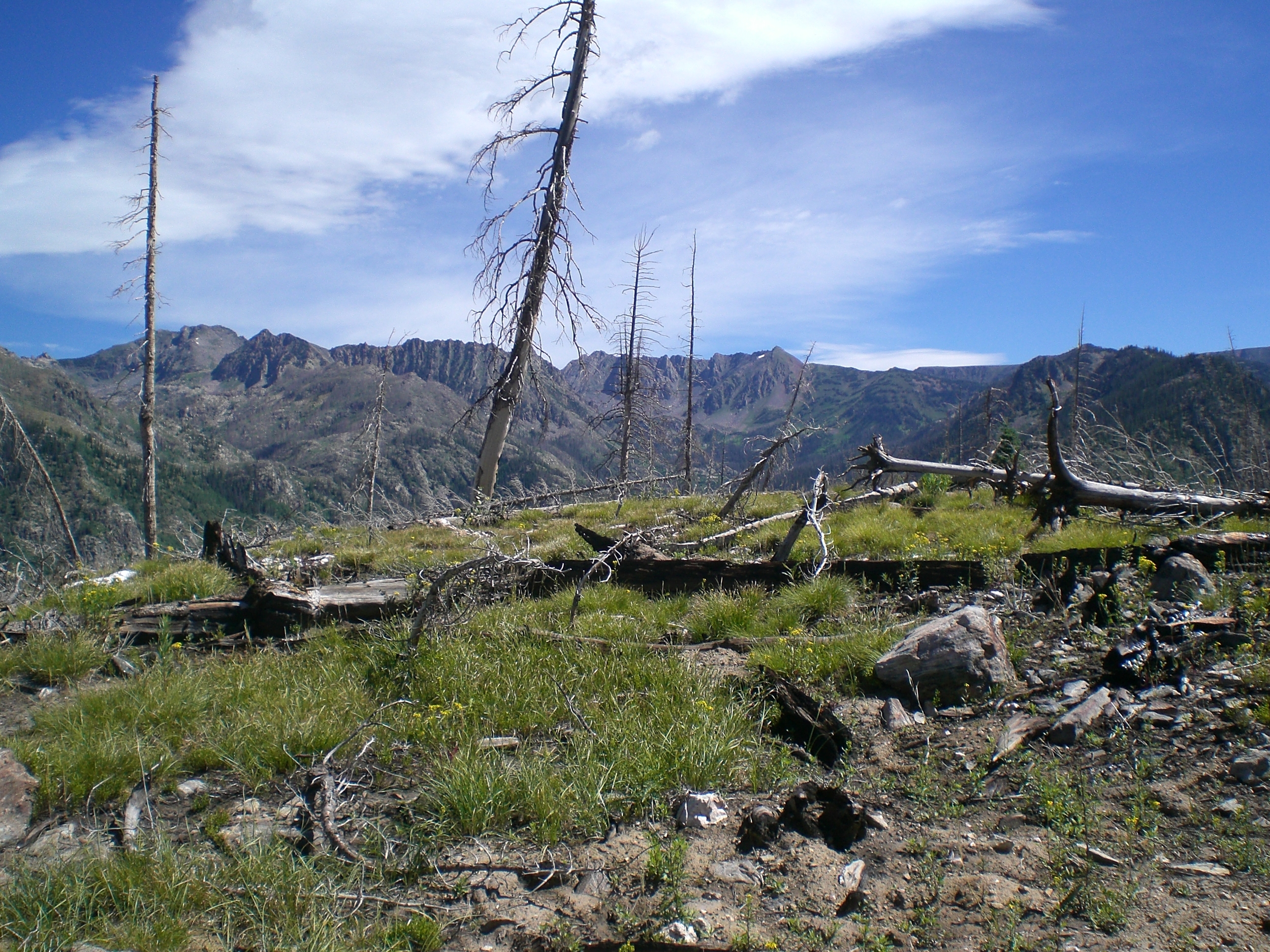

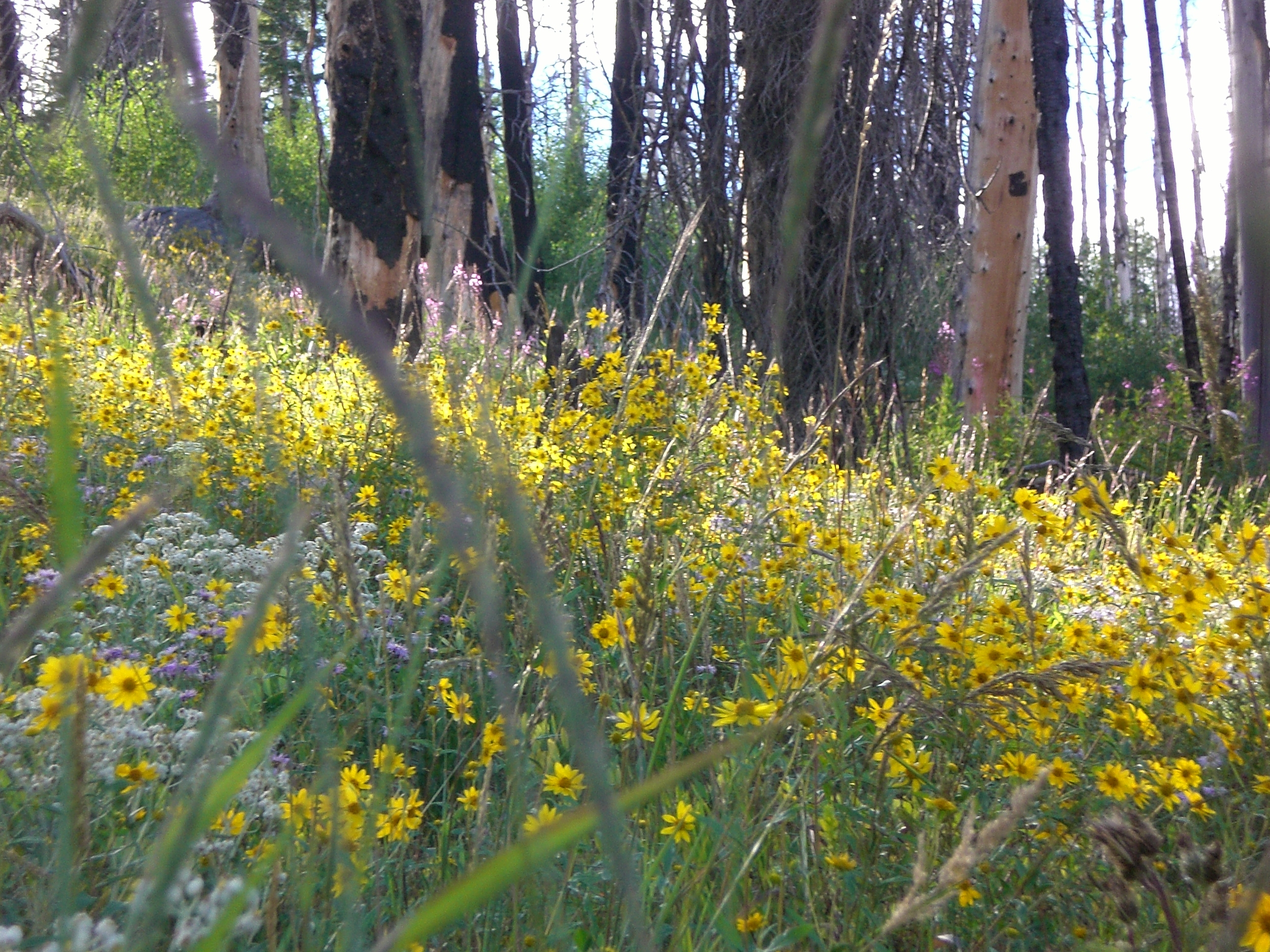
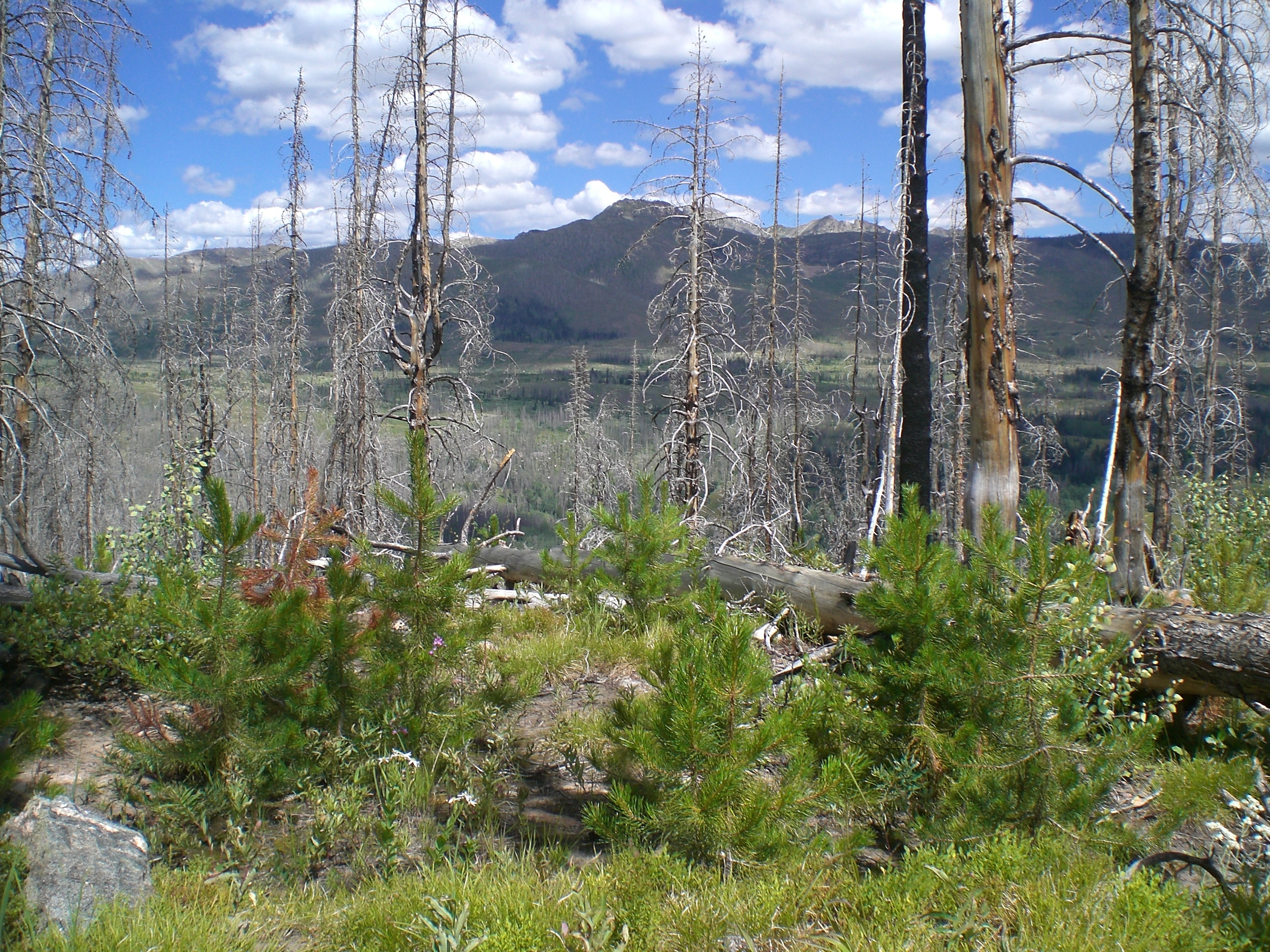
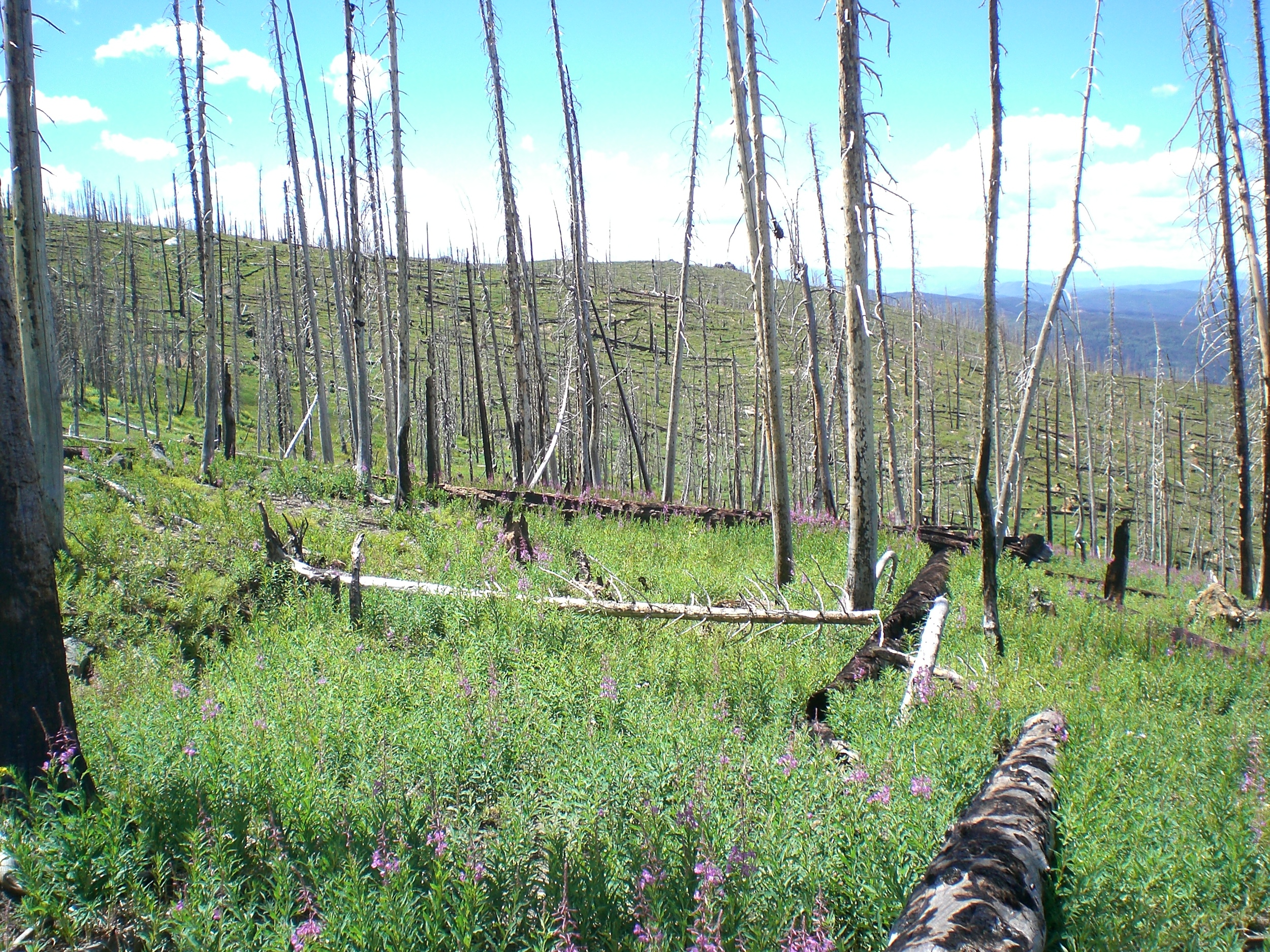
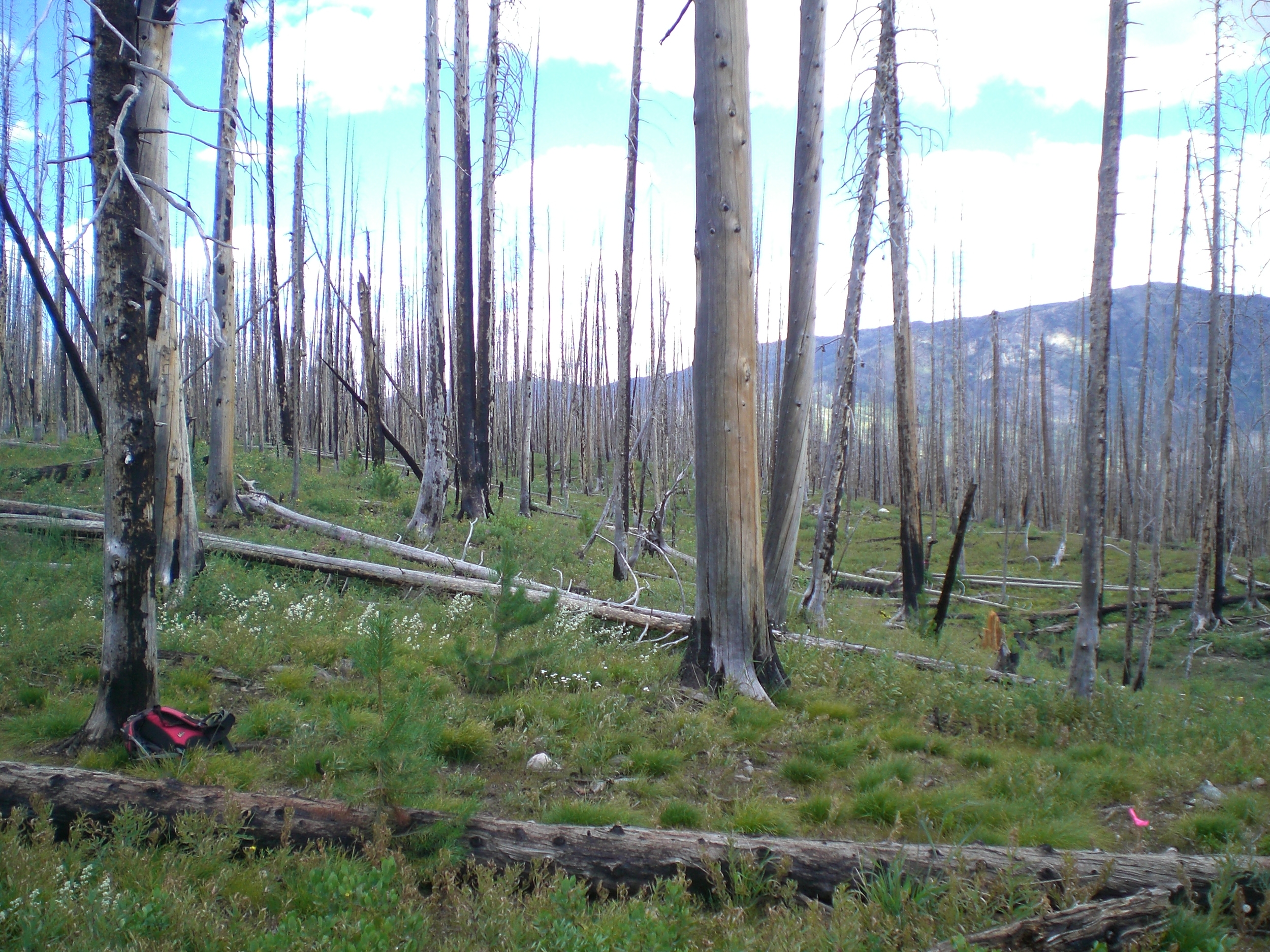

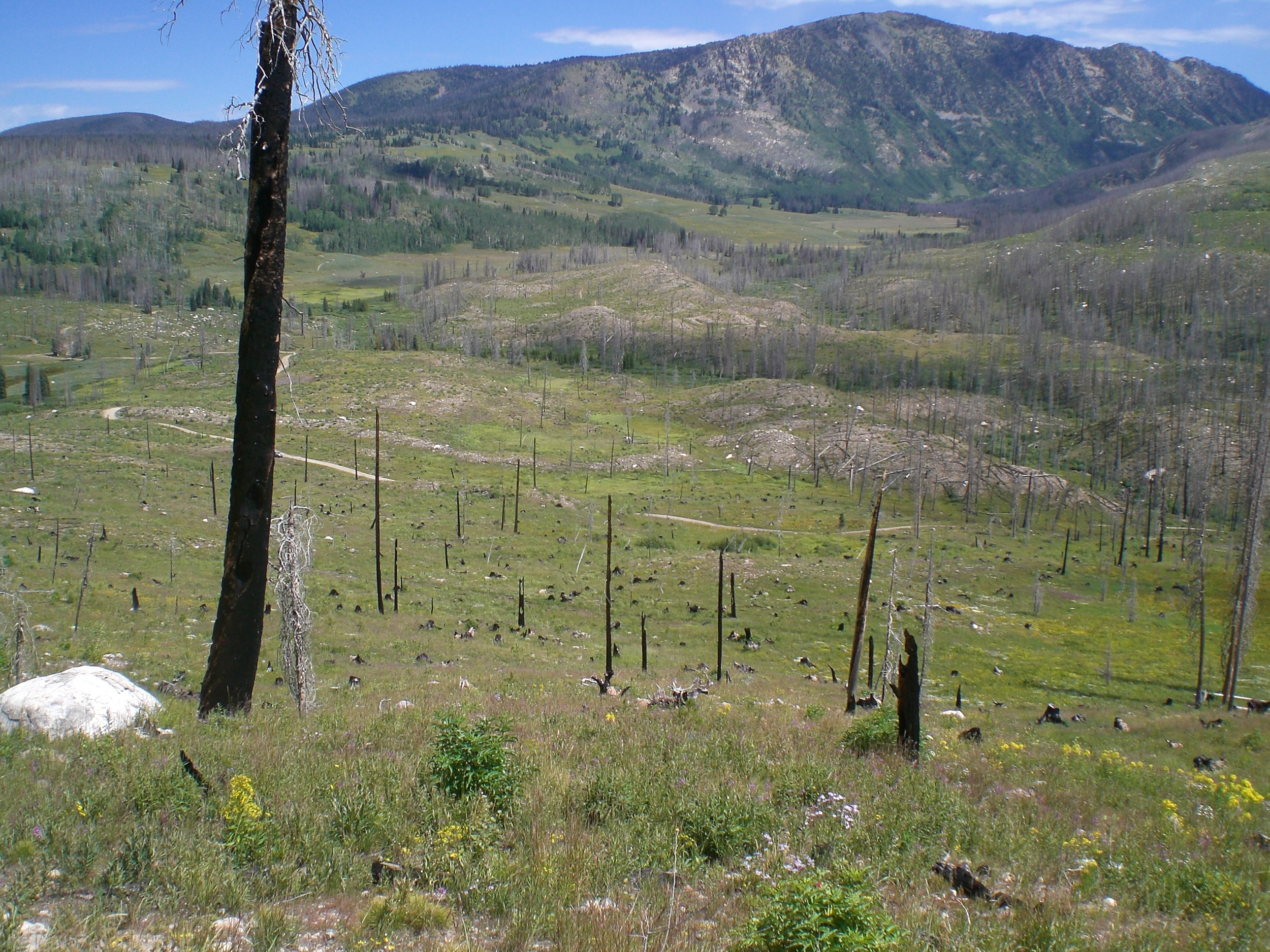
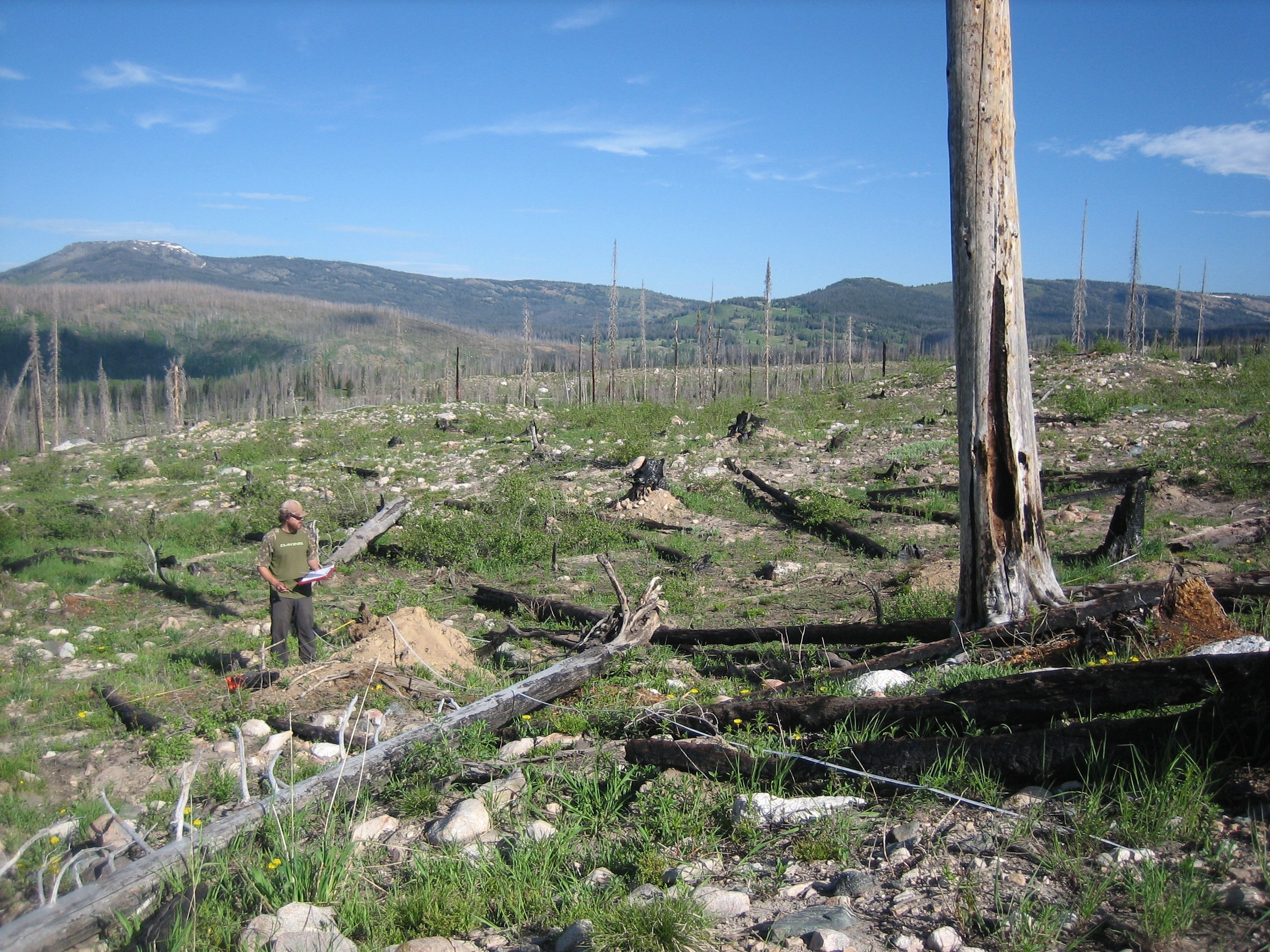
A variety of pictures from the Hinman fire in the Park Range of Colorado, an excellent area for exploring the implications of multiple disturbances on forest resilience. Some areas had just fire, while others were blowdown (partially or complete) and sometimes logged before the burn. Note the increasing fire severity with increasing disturbance intensity before the burn.
